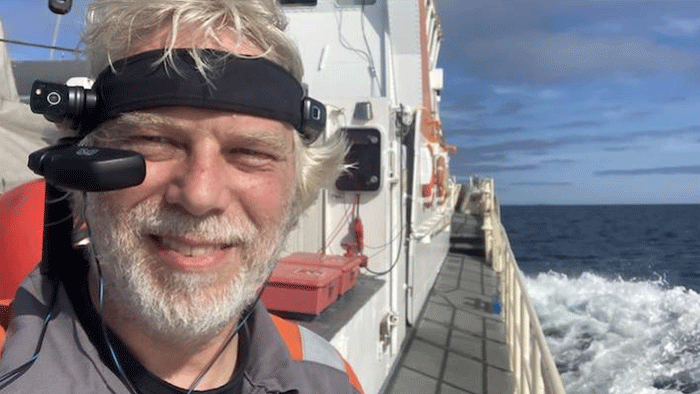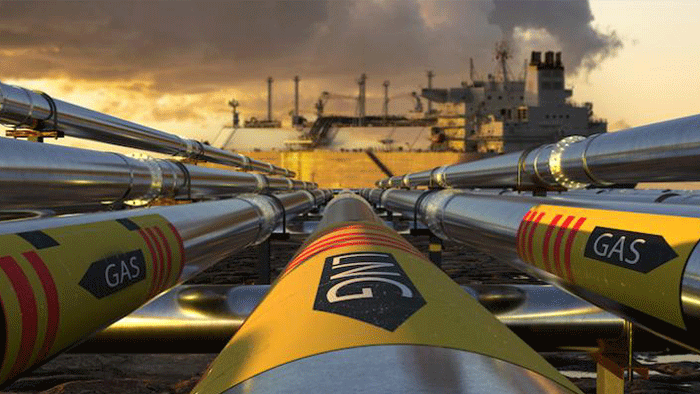Decarbonisation and ammonia

A key component in this challenge will be alternative fuels, with maritime organisations coming together to help pave the way for the entire industry as it strives to become greener and cleaner.
The Mærsk McKinney Møller Centre for Zero Carbon Shipping (MMMCZCS) is involved in intensive research and development to identify practical approaches for decarbonising the industry, and alternative fuels are a key area of focus.
Their endeavours have been aided by global ship management company V., who formed a strategic partnership with the MMMCZCS in 2021.
V.’s Director of Sustainability and Decarbonisation, Matt Dunlop, is a Strategic Partner and Secondee to the MMMCZCS, and he has recently been involved in the creation of a report which assesses and addresses the onboard safety risks to a ship’s crew of using one particular alternative fuel: Ammonia.
Here he discusses the merits of using ammonia, and also outlines what needs to be put in place to enable it to be used safely.
A promising alternative
Ammonia is seen as one of the most promising alternative fuels for the maritime energy transition, as it can be combusted with almost no carbon dioxide (CO2) emissions.
On top of this, the well-to-wake emissions from green ammonia – ammonia produced using renewable electricity – have been estimated to be 97% lower than those produced by low-sulphur fuel oil according to the MMMCZCS.
However, using Ammonia as a shipping fuel can create potential safety hazards, including toxicity.
Safeguards
It is therefore crucial for shipping’s stakeholders to understand the risks of Ammonia as a shipping fuel and the safeguards that can be implemented to reduce them to tolerable levels.
Questions that need to be addressed include:
- What are the risks to crew in using ammonia as a marine fuel?
- Are those risks tolerable?
- What safety measures can be implemented to reduce these risks?
Going forward it is paramount that specific attention is paid to not only developing the technical competencies of those personnel who undertake safety-critical tasks relating to ammonia, but also to the non-technical competencies of all crew members in sharing and motivating others to communicate hazard-related information.
Safety practices must also incorporate good leadership, communication, learning, crew engagement, and work practice adherence.
Focusing specifically on using ammonia as a potential fuel, there are a number of high-priority recommendations that must be considered:
- Lower storage temperature reduces the safety risk from ammonia fuel
- Divide the fuel preparation room into two or more separate spaces containing different groups of equipment that could leak ammonia
- Access to and length of time spent in spaces containing ammonia equipment should be minimised, monitored, and controlled
- Multiple sensors of different types to detect ammonia leaks should be installed
Positively however, we believe the risks to crew of using ammonia as an alternative fuel can be kept within tolerable limits, provided that the maritime industry can:
- Ensure suitable and sufficient technical barriers and administrative safeguards are implemented to protect the crew against various ammonia risks
- Address human factors considerations e.g. competency, process and procedures, occupational safety, and process safety
- Build upon existing maritime industry experience with gas as fuels and cargo and carry over learnings from other industries with considerable experience in safely handling, transferring, and storing ammonia.
Training is key
As I’ve touched upon, when it comes to the adoption of new fuels including ammonia, the maritime industry must ensure that operating procedures, safety management and crew training keep pace with innovation.
This is backed up by recent analysis which suggests that to align with the Paris 1.5°C emissions reduction trajectory, an estimated 450,000 seafarers will require essential training or re- and upskilling by 2030, and 800,000 will require training by the mid-2030s.
Crew need to be trained how to handle, store, and manage new fuels and operate technically advanced propulsion systems in coming years. Many new skills and knowledge will be required for the new roles associated with the adoption of ammonia as an alternative fuel; there will also be numerous changes to, and increased reliance on, functional work practices.
There will be further need for enhanced non-technical skills for all crew too, such as maintaining situational awareness and recognising potential hazards that will affect decision-making, communication, and leadership.
Without a doubt, challenges will be posed by the adoption and implementation of new fuels. With correct planning and due diligence however, the shipping industry can make the transition to greener and cleaner fuels successfully.
It must do, for the sake of both the maritime world and the planet.







